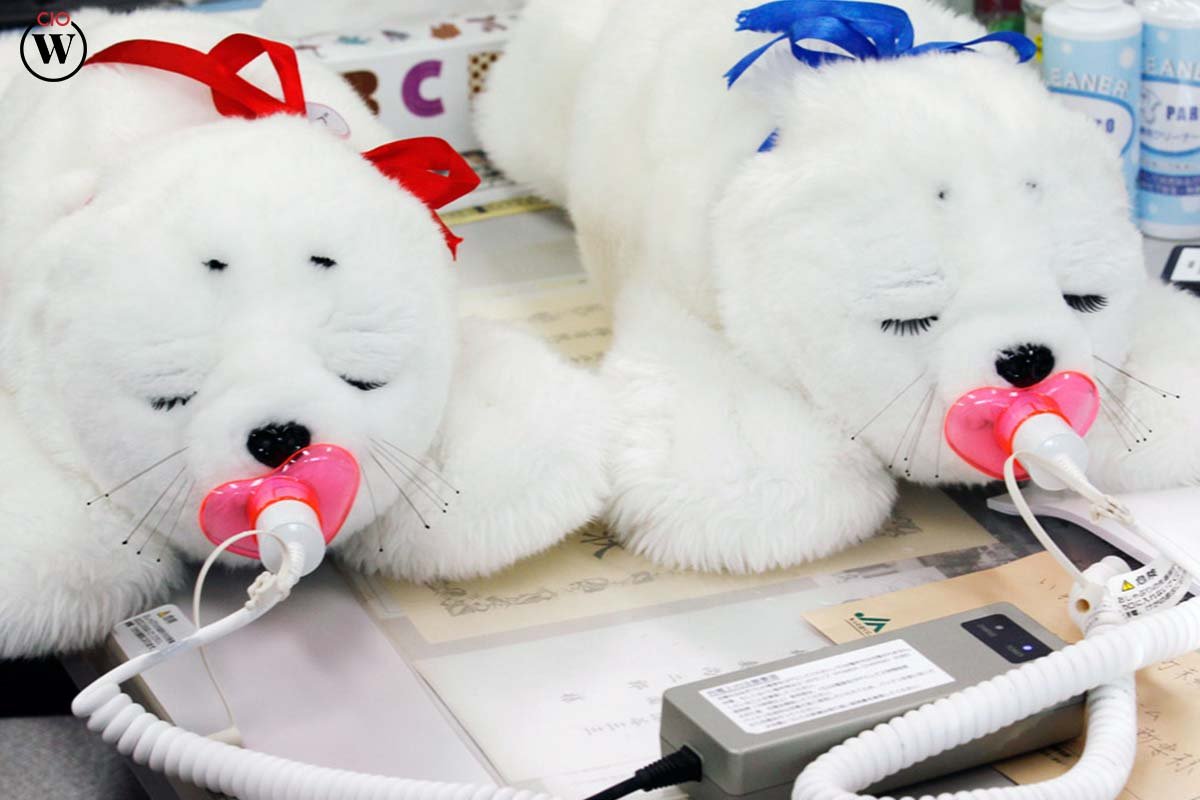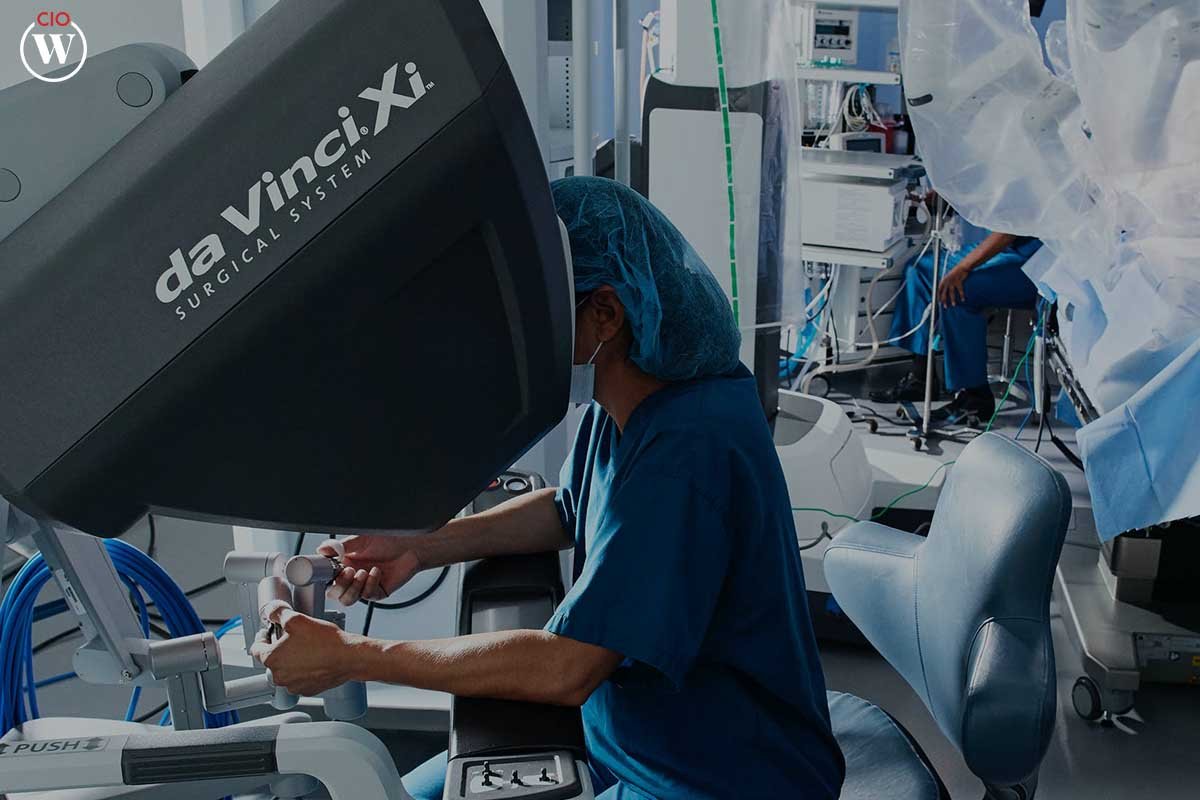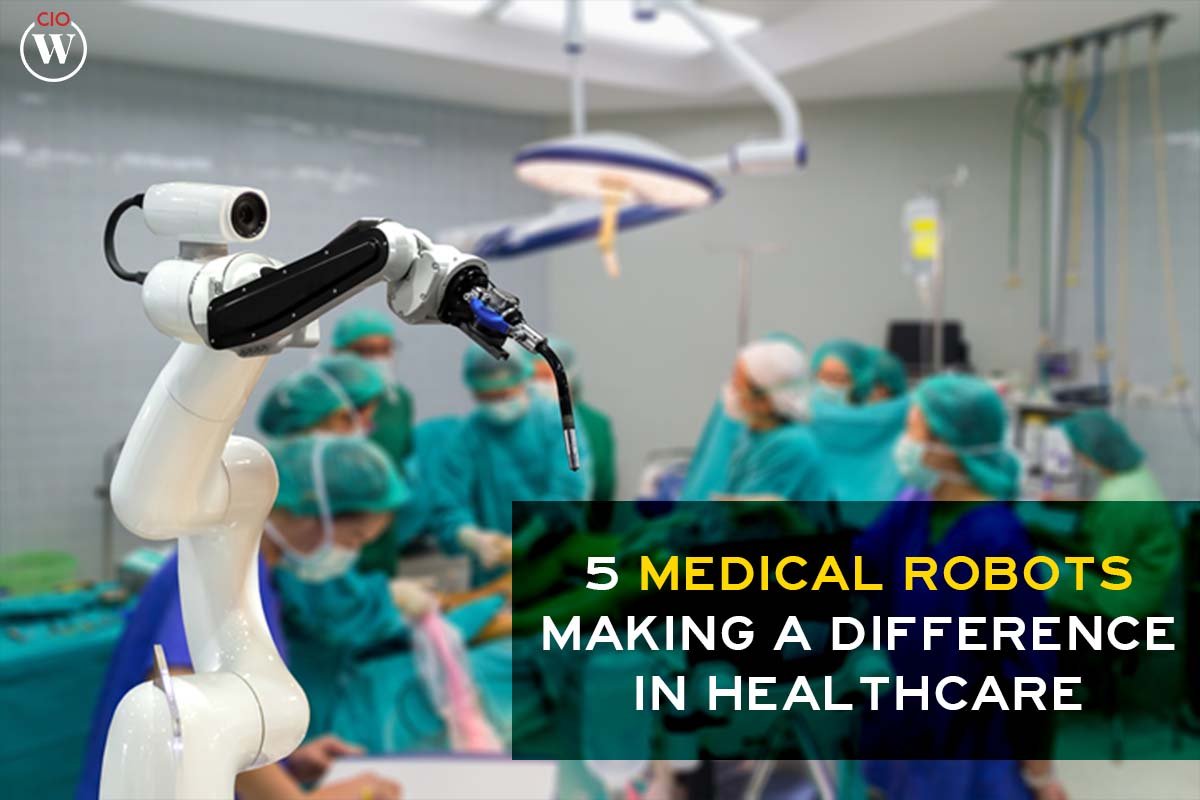Robotic machines that are deployed in the medical industry are known as medical robots. Assistive robotics, which includes wearable robots and rehabilitation devices; robots that mimic the human body, which includes prostheses, artificial organs, and body-part simulators; medical robotics, which includes surgery robotic devices, diagnosis, and drug delivery devices; and assistive robotics, which includes wearable robots and rehabilitation devices. Medical Robots Making a Difference in Healthcare They can be broken down into these three main categories.
Here are the 5 Medical Robots making a difference in HealthCare;
1. Da Vinci
The da Vinci System has been in existence for over 18 years, and during that time, its capabilities have continuously improved. The da Vinci system blurs the lines between “robot” and “medical tool” due to the fact that it is a device that is continually under the supervision of a surgeon.

Accuracy in any and all procedures is made possible by da Vinci technology. The approach makes use of a few smaller incisions to cause little invasion. Medical Robots Making a Difference in Healthcare, This is made possible with the use of an improved set of equipment, which includes a three-dimensional high-definition image of the area that is being operated on. The method helps to prevent bleeding, allows for speedier healing, reduces the chance of infection, and results in fewer issues for patients when compared to open or laparoscopic surgery.
2. The Germ-Zapping Robot Xenex
Along with reducing medical and surgical mistakes, hospital-acquired infections (HAIs) are another common concern in healthcare that robots might help with. Medical Robots Making a Difference in Healthcare, In 2011, the CDC recorded 722,000 HAIs in acute care hospitals in the United States. 3 HAIs arise often because hospitals are not always able to clean rooms with 100 percent sterility between patients, whether owing to time restrictions or the basic invisibility of germs. Patients who are already immunocompromised are more vulnerable to bacterial infection for any cause.
To address this fundamental issue, the Xenex, an automated and portable robot, disinfects whole hospital rooms in minutes using pulsed, full-spectrum UV rays that destroy a variety of harmful germs. Medical Robots Making a Difference in Healthcare, It is intended to minimize HAIs like Methicillin-resistant Staphylococcus aureus (MRSA) by eliminating the germs that cause them, which may be especially resistant to therapy. Plus, the robot is sort of cute—it looks like a life-saving R2-D2.
3. Actuated and sensory prostheses.
The science of prosthetics has evolved to the point that an amputee’s mind can control it. Researchers at the MIT Biomechatronic lab have developed gyroscopically actuated robotic limbs that can detect their location in three-dimensional space and modify joints up to 750 times per second. The MIT Media Lab has approximately 20 research groups, including the Biomechatronic Group.

The group’s objective is “First, via research and development, we want to restore function to those who have lost movement due to injuries or sickness. Second, we create technologies that go above and beyond what nature intended. Medical Robots Making a Difference in Healthcare, The scientific discipline of organismal and cellular neuromechanics is combined with the technical discipline of bionic device design to achieve the goals. Biomechanists, neuroscientists, and biophysicists work with electrical, mechanical, biomedical, and tissue engineers on our research team “.
The Biomechatronics Group has also created bionic skins and neural implant devices. This innovative technology acts as a nervous system interface, allowing the user to get tactile sensation from the prosthesis and operate it volitionally, exactly like a healthy limb.
4. The PARO Therapeutic Robot
Unlike the other two robots, this one is not intended to save lives in the traditional sense, but rather to enhance the quality of life after recuperation from surgery or therapy for depression or other mental illnesses. The PARO Therapeutic Robot is an interactive gadget that resembles a young harbor seal and was created to deliver the advantages of animal therapy without the use of actual animals.
Animal therapy is a frequent strategy for relieving patient stress, however, trained animals are not always accessible to meet current demand. PARO, who is kind and animal-like, fits the bill. Medical Robots Making a Difference in Healthcare, PARO is widely utilized with senior dementia patients and has been shown to alleviate tension and bring comfort to nervous people.
4 The fuzzy PARO responds to its name, appreciates being caressed, and develops a personalized, appealing personality over time based on its recollection of prior experiences. PARO also sleeps, blinks, wiggles its flippers, and makes amusing sounds for its owner. Bonus: it charges by “sucking” on a pacifier-shaped charger.
5. Endoscopy-Bot
Endoscopy is a delicate and uncomfortable procedure that involves inserting a small camera or device that is attached to a long cable into a natural hole that exists inside the body. This is done in order to examine the area for any signs of sickness, damage, or foreign items.
New improvements to the procedure have been developed by a number of companies, including Engineering. Medical Robots Making a Difference in Healthcare, During the therapy, the doctor guides slender, bendable robots to the area that has to be treated. This ensures that the procedure is carried out with accuracy and precision.








